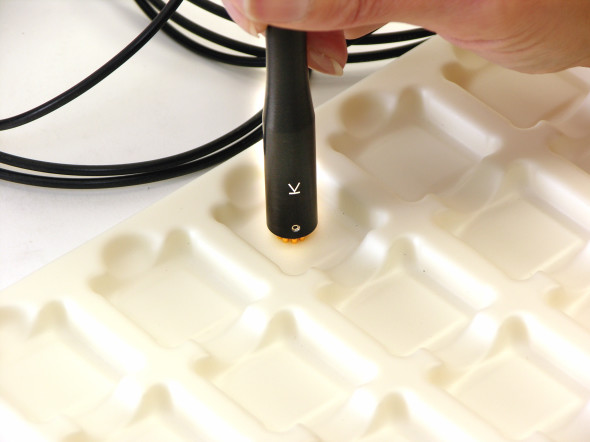The challenge of measuring fabrics is that it is not a solid and smooth surface, like sheet metal or plastic films, but rather a surface with lots of texture, meaning less surface area and dispersed discrete contact points. The cloth materials can range from a textured continuous surface to mesh-like with lots of repeated holes, mostly air.
Read more…
Although the PRF-912B Miniature Concentric Ring was designed to work with Prostat resistance meters, it is compatible to work with other meghometers as long as they are able to work BNC adaptor and cable as long as you have a resistance instrument that supplies a constant defined voltage of <10, 10 and 100V (depending on resistance being measured). If this is the case then you could use the PRF-912B with a third party megger.
Read more…
Recently, a customer using a Charge Plate Monitor asked an interesting question regarding the Prostat CPM-720A Charge Plate Monitor. Since it is stated that the CPM720A capacitance is approximately 10pF, does any direct decay measurement made with the CPM-720A should be multiplied by a factor of two (2) in order to match the requirements of ANSI EOS/ESD S3.1?
Read more…
Is it possible to add one (1) order of magnitude on the resistance reading if I want to get an estimate of ASTM D-257 Surface Resistivity in ohms/square? If not, how can you get the surface resistivity when using the Prostat PRF-922B Two-Point Probe?
In fact, surface resistivity is a calculation, and the probe used for the PRF-922B is specifically measuring point to point resistance. Read more…
Why does your PCS-71A or ESL-715A Static Locator Recently not zero? Even after connecting your meter to earth ground and turn on the meter and hit the “ZERO” button twice, it reads 0.02 instead 0.00.
Read more…
Working in the ESD industry, I get asked some interesting questions. One of the questions came from one of our customers regarding the advantages of using the two-point probe and concentric ring over the ordinary two probe multimeter?
A multimeter uses pointed instrument probes to measure between 2 points on a circuit assembly, or to measure continuity between 2 points. Depending on its design a multimeter measures AC & DC voltage, limited resistance — typically up to 40 Megohm (4.0×106 ohms), diode or capacitance attributes, etc.

- A Concentric Ring is designed to meet two specifications for measuring and classifying packaging materials for electronic applications: ANSI/ESD STM11.11 Surface Resistance and ANSI/ESD STM11.12 Volume Resistance of planar (flat) films, wraps, bags, etc. These are either area or volume measurements – nothing at all like measurements made with pointed instrument probes.
Read more…
High relative humidity (Rh) causes moisture to deposit and be absorbed by some materials. It does not eliminate triboelectric charge generation. Rather, it lubricates surfaces to reduce charge generation to some degree, and helps render material surfaces slightly more dissipative. The end result is lower charge generation and a lower residual charge. Unfortunately, Rh does not reduce charge sufficiently on ordinary materials to protect many ESD sensitive devices in critical assembly or laboratory areas. Never design your ESD control based on available humidity.
Rather, design your ESD control program assuming a low humidity (or no humidity) environment. The if Rh is available, it helps make a good program more effective. Like a special sauce heightens the flavor of well-prepared dish.
Finally, relative humidity and moisture will not eliminate charge. If it did, you would never see lightening during a thunderstorm.

Recent Comments